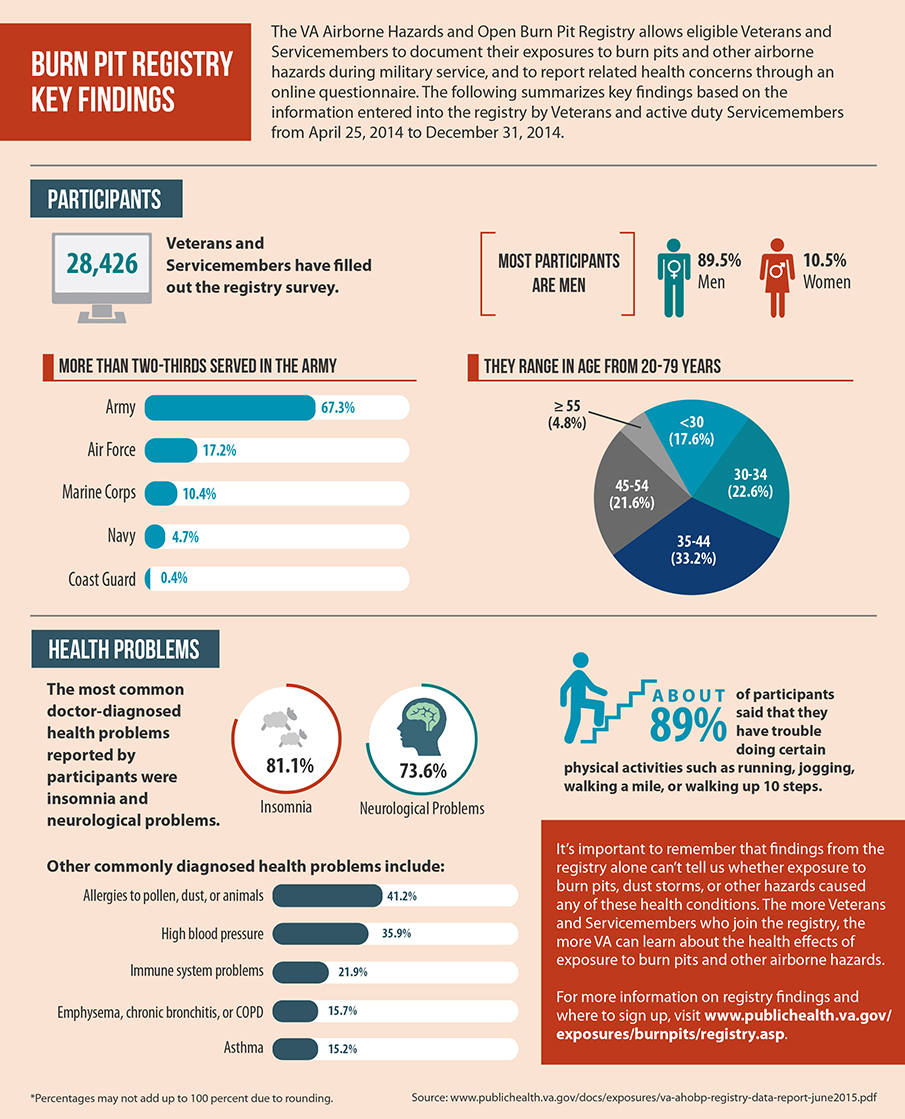Burn Pit Registry Key Findings

Text Version of Infographic
Burn Pit Registry Key Findings
The VA Airborne Hazards and Open Burn Pit Registry allows eligible Veterans and Servicemembers to document their exposures to burn pits and other airborne hazards during military service, and to report related health concerns through an online questionnaire. The following summarizes key findings based on the information entered into the registry by Veterans and active duty Servicemembers from April 25, 2014 to December 31, 2014.
Participants
28,426 Veterans and Servicemembers have filled out the registry survey.
Most participants are men:
- Men: 85.5%
- Women: 10.5%
More than two-thirds served in the army:
- Army: 67.3%
- Air Force: 17.2%
- Marine Corps: 10.4%
- Navy: 4.7%
- Coast Guard: 0.4%
They range in age from 20-79 years:
- <30: 17.6%
- 30-34: 22.6%
- 35-44: 33.2%
- 45-54: 21.6%
- ≥55: 4.8%
Health Problems
The most common doctor-diagnosed health problems reported by participants were insomnia (81.1%) and neurological problems (73.6%). Other commonly diagnosed health problems include:
- Allergies to pollen, dust, or animals: 41.2%
- High blood pressure: 35.9%
- Immune system problems: 21.9%
- Emphysema, chronic bronchitis, or COPD: 15.7%
- Asthma: 15.2%
About 89% of participants said that they have trouble doing certain physical activities such as running, jogging, walking a mile, or walking up 10 steps.
It’s important to remember that findings from the registry alone can’t tell us whether exposure to burn pits, dust storms, or other hazards caused any of these health conditions. The more Veterans and Servicemembers who join the registry, the more VA can learn about the health effects of exposure to burn pits and other airborne hazards.
For more information on registry findings and where to sign up, visit www.publichealth.va.gov/exposures/burnpits/registry.asp.
Percentages may not add up to 100 percent due to rounding.




















